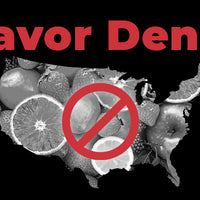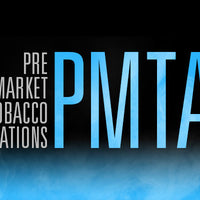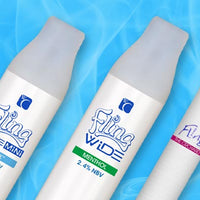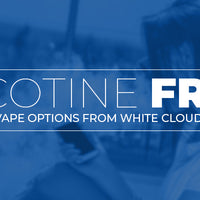The FDA recently published in the U.S. Federal Register the final ruling of its “Deeming Regulations” in extending its authority over tobacco products to include vapor products. Although the regulation requirements do not take effect until August 8, 2016, the FDA’s involvement in the vaping industry goes as far back as 2008.
FDA and E-Cig Laws: A Brief History
The majority of vapers in the US may be very well-aware of the FDA’s plans to regulate vapor products as of August 8, 2016. What many may not know is just how involved the FDA has been in the vaping industry, even before legally acquiring the authority to regulate vapor products. Here is a timeline of what has gone down between the FDA and the vaping industry during these last nine years.
2008: The War Against E-Cigs Begins
In August of 2008, the war against electronic cigarettes began when GreenCig attempted to register their products with the FDA. About a month later, The World Health Organization (WHO) instructed e-cig companies to cease health claims and were told they could no longer market vapor products as smoking cessation tools due to lack of research. By November of 2008, the FDA rejected GreenCig’s application for the same reason.
2009: FDA Begins Seizing E-Cig Shipments
In early 2009, the FDA began seizing e-cigarette shipments entering the United States based on the claim that they had grounds to seize products for incorrect labeling. The FDA continued blocking and seizing shipments containing electronic cigarettes with the support from a group of US senators, one of which was later accused of receiving significant funding from the pharmaceutical industry.
April of 2009 brought on the first lawsuit against the FDA when Smoking Everywhere sued the FDA for seizing shipments of their products. The company based the lawsuit on the claim that its shipments did not contain medical devices; therefore, the FDA had no ground for seizing shipments.
By May of 2009, the FDA released a lab report condemning electronic cigarettes based on the testing of cartridges from two e-cig brands, with a nicotine inhaler used as the control for testing methods. In the report, the FDA stated a “sparging apparatus” was utilized to simulate the use of the vapor products. By this time, NJoy – one of the e-cig manufacturers included in the study – joined in on the lawsuit against the FDA and released its own report debunking the claims made in the FDA’s lab report on the basis of inaccurate testing methods and false interpretation of the study results.
In June of 2009, the Tobacco Control Act was signed into law by President Obama, which gave the FDA jurisdiction over tobacco products. Within the same month, the FDA submitted a press release containing negative claims about electronic cigarettes with the focus on chemicals found in a single e-cig cartridge (out of thousands).
In an effort to fight back against the FDA’s involvement in the vaping industry, members of an online forum for vaping advocacy formed the first official nonprofit vaping organization, the Consumer’s Association for Smoke-Free Alternatives Association (CASAA).
2010: FDA’s Battle Against E-Cigs Continues
In early 2010, the FDA received an order from Federal District Judge Richard Leon to cease the blocking of shipments containing electronic cigarettes and advised to rely on its authority over tobacco products to deal with the situation; however, the FDA appealed the ruling and acquired a temporary state of injunction to continue blocking e-cig shipments.
In April of 2010, a collection of public health groups, including the American Cancer Society, the American Heart Association, the American Legacy Foundation, the American Medical Association, the American Lung Association, Public Citizen, the American Academy of Pediatrics, and the Campaign for Tobacco-Free Kids filed an Amicus brief supporting the FDA’s blocking of e-cig shipments.
In September 2010, the FDA included five e-cig companies in a letter stating plans for regulating electronic cigarettes under the Federal Food, Drug and Cosmetic Act with a warning that the companies were not in compliance.
By the end of 2010, the legal battle with the FDA ended in favor of NJoy and the FDA decided not to pursue taking the case to a Supreme Court judge. Smoking Everywhere, the company that initiated the lawsuit, was not included as it was rumored the company had dropped out due to apparent financial issues.
2011: FDA Continues Blocking E-Cig Shipments
In early 2011, many e-cig companies claimed the FDA was still seizing and blocking their shipments, despite the judge’s orders to cease. It was around this time that Totally Wicked started a new lawsuit against the FDA for seizing shipments against federal ruling.
By April of 2011, Totally Wicked had dropped the lawsuit as the FDA had finally stopped blocking e-cig shipments and instead began pursuing regulations based on its authority granted through the Tobacco Control Act of 2009.
2012: FDA Moves Forward with E-Cig Regulations
In May 2012, the FDA made an announcement on its intent to regulate electronic cigarettes with a draft prepared within a few months. The draft was never released; however, the FDA did release a report titled “FDA Summary of Adverse Events on Electronic Cigarettes” in August of 2012.
During the same year, the Smoke-Free Alternatives Trade Association (SFATA) was formed to advocate for vapor products as an alternative to tobacco by representing the distributors, manufacturers, retailers and consumers of the vaping industry.
2013: FDA Continues the Regulatory Process
In 2013, the FDA continued the nine-step process required for developing new regulations and, by the end of the year, had moved on to the fourth step of the process in developing proposed regulations for electronic cigarettes.
In late 2013, the third major vaping organization, the American Vaping Association (AVA), had formed “for the purpose of positive media advocacy for vaping and electronic cigarettes.” The AVA is a non-profit organization dedicated to educating the public and government officials about the financial and public health benefits offered by vapor products.
Related: Top Vaping Advocacy Organizations in the United States
What Came Next for the FDA?
In Part 2, we’ll take a look at what came next for the FDA and the vaping industry, starting with April of 2014, when the FDA submitted a press release officially announcing the proposal to extend its tobacco authority to include electronic cigarettes.






